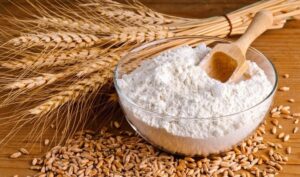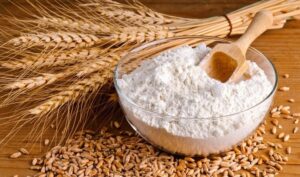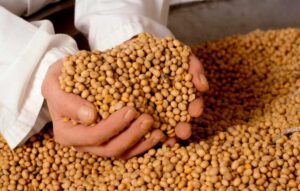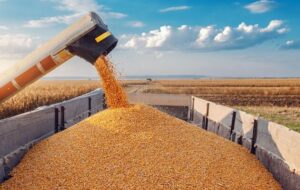
Ukraine increased imports of goods in January-November 2025 by 18.5% in monetary terms to $75.4 billion, while exports decreased by 4.02% to $36.8 billion from $38.3 billion, according to the State Customs Service of Ukraine (SCS).
“At the same time, taxable imports amounted to $57.6 billion, which is 76% of the total volume of imported goods. The tax burden per 1 kg of taxable imports in January-November 2025 was $0.52/kg,” the SSU notes.
The countries from which the most goods were imported to Ukraine included China ($17 billion), Poland ($7.1 billion), and Germany ($5.9 billion).
The largest exports from Ukraine were to Poland ($4.6 billion), Turkey ($2.5 billion), and Germany ($2.2 billion).
Of the total volume of goods imported in January-November 2025, 67% fell into the following categories: machinery, equipment, and transport – $30.2 billion (during customs clearance of these goods, UAH 185.8 billion, or 29% of customs payments, was paid to the budget); chemical industry products – $11.4 billion (UAH 89 billion, or 14% of customs payments, was paid to the budget), fuel and energy products – $9.4 billion (UAH 188.4 billion, or 29% of customs payments, was paid).
The top three most exported goods from Ukraine were food products – $20.4 billion, metals and metal products – $4.3 billion, machinery, equipment, and transport – $3.4 billion.
“In the first 11 months of 2025, during customs clearance of exports of goods subject to export duties, UAH 1.2 billion was paid to the budget,” the SSU added.

For the first time in 2025, a separate annual quota for the supply of 30,000 tons of Ukrainian flour to the European Union has been granted, which opens up opportunities for long-term planning for the domestic flour milling business, said Rodion Rybchinsky, director of the Ukrainian Flour Millers Association.
“The top 10 export-oriented companies have already invested around EUR 17 million in modernization and now understand that these investments will have prospects,” he said at the “Agribusiness in Ukraine” conference in Kyiv on Thursday.
He recalled that until 2022, flour was exported within the joint quota with wheat. Flour millers usually did not have time to deliver their products to the EU, as grain traders were the first to choose the quota. Only after the opening of trade preferences in 2022 did Ukrainian flour begin to actively enter the EU market, and in 2023, flour exports to EU countries amounted to 73,000 tons.
“These volumes became an argument in the negotiations: if 73,000 tons were successfully delivered to the EU, the question of Ukrainian flour’s non-compliance with European quality requirements would be moot,” said Rybchynskyi.
According to him, Ukrainian flour is now available in Germany, the Czech Republic, Spain, and Italy, which is clear proof of the high quality of Ukrainian products.
Rybchynskyi noted that during the 11 months of 2025, Ukraine supplied 26,000 tons of this product to the EU, so by the end of the year, domestic producers will be able to fully use the quota. At the same time, the biggest problem for flour millers in 2026, if we assess the prospects of the industry, will be the labor shortage.
He named the European Millers’ Congress in France as one of the most anticipated events in the industry next year, during which the Ukrainian side will try to find arguments and establish contact, in particular, with the Romanian Association of Flour Producers, as well as try to lay the groundwork for a review of quotas in 2028. According to Rybchynsky’s estimates, Ukraine is capable of supplying 300,000 tons of flour to the EU market.

Ukrainian sugar in 2025 turned out to be a very bitter topic and a sore point in negotiations on trade in agricultural products with the European Union. The industry’s plans for 2026 are to increase the share of Ukrainian sugar on the European market, said Yana Kavushevska, head of the National Association of Sugar Producers of Ukraine “Ukrtsukor,” Yana Kavushevska at the conference “Agribusiness in Ukraine” in Kyiv on Thursday.
She noted that during the preparation of the updated trade agreement, the Ukrainian side was not prepared to deal with the powerful sugar lobby and its stakeholders in the EU, along with their strong support at the political level.
Another surprise was the European community’s bias against Ukrainian agricultural products. Among the most absurd myths, Kavushevska named the inexhaustible potential of the Ukrainian agricultural sector, the dominance of agricultural oligarchs, etc. Both Ukrainian agricultural associations and government officials had to refute these myths.
“One of the areas of our communication was to explain to Europeans that the Ukrainian sugar industry is a continuation of the European one. We use all the inputs that we purchase in the European Union in our work. (…) For every hectare of sugar beet, we purchase approximately $1,000 worth of goods in the EU. Accordingly, this year we have 200,000 hectares of sugar beet in Ukraine, for which we have purchased $200 million worth of products from the EU,” said the head of Ukrtsukor, adding that such arguments either surprise or are ignored by her European colleagues.
Speaking about the quotas that Ukraine received for sugar supplies to the EU under the updated trade agreement, Kavushevska noted that they had increased fivefold compared to the previous ones.
“Indeed, the results we have achieved with the quota received in the European Union for sugar show a fivefold increase — from 20,000 tons to 100,000 tons. Is this a lot or a little? Probably no one could be satisfied. But I am sure that if there had been no effective agricultural and social communication, this quota could have been smaller,” said the head of Ukrtsukor.
She stressed that the EU likes predictability, balance, and foreseeability. This is how she explained the need for Ukraine to introduce internal licensing for sugar exports to the European Union. In her opinion, this mechanism will allow Ukrainian sugar producers to eventually become not just technical suppliers of products to the EU, but gradually transform into full-fledged members of the European market.
“Yes, it costs producers who want to export additional expenses for obtaining documents, complications, and delays in possible deliveries. But this (internal quotas – IF-U) is what demonstrates to Europeans that we know how to work and regulate the market,” the expert explained.
Kavushevska named another complication of the updated trade agreement for sugar producers as the European Union’s application of the concept of a “critical quota” to Ukrainian sugar. It provides for the importer to deposit financial guarantees into special accounts, which will be returned to them 3-30 days after customs clearance of goods received from Ukraine. According to the expert, this mechanism is one of the ways to prevent the uncontrolled spread of Ukrainian sugar in the EU. At the same time, it is an unpleasant moment for European buyers, who have to freeze their own working capital for a certain period.
Speaking about the sugar producers’ plans for 2026, the head of the association said that the industry will continue to establish contacts with the European sugar industry and hopes that licensing will continue as an export mechanism. In addition, benchmarks will be developed for key production indicators so that the industry can prepare for integration into the European market.
“For Ukrainian sugar producers, the European market is virtually the only option. We cannot compete for Africa because Brazil will always dominate there logistically. Our task is to gain a foothold in Europe, increase Ukraine’s share as much as possible, and eventually ensure the European Union’s self-sufficiency in sugar,” Kavushevska concluded.

Ukraine exported 26,000 tons of wheat flour in the first five months of the 2025-2026 marketing year (MY, July-June), which is 11% less than in the same period of the previous MY. of which 5.4 thousand tons (-7%) were shipped in November, according to the information and analytical agency “APK-Inform.”
Analysts specified that the main volume of exports went to Moldova (30%), the Czech Republic (18%), and Palestine (16%).
“Importers have significantly reduced their purchases of Ukrainian products. For example, Moldova purchased 7.9 thousand tons this season, which is 10% less than in the previous season, and the Czech Republic purchased 4.7 thousand tons (-23%). Palestine reduced its imports, purchasing only 4.3 thousand tons compared to 5.7 thousand tons in the 2024/25 season (-25%),” experts said.
According to their estimates, in July-November 2025/26 MY, Ukraine produced 371.7 thousand tons of flour, which is 8% less than in the same period of 2024/25 MY.
“In general, wheat processing in 2025/26 MY is expected to reach 2.6 million tons, which is 2% less than last season,” APK-Inform predicts.

The Cabinet of Ministers has adopted a resolution introducing a mechanism for monitoring soybean and rapeseed exports, according to the press service of the Ministry of Economy, Environment, and Agriculture.
“We are introducing a transparent mechanism that allows producers, rather than intermediaries, to be exempt from export duties. The funds that the state will receive from traders’ duties will replenish a special budget fund and will be directed to programs to support frontline territories, where farmers work in the most difficult conditions, grants for processing, greenhouses, orchards, and insurance against military risks,” said Deputy Minister of Economy, Environment, and Agriculture Taras Vysotsky, whose words are quoted in a statement on the ministry’s website.
The Ministry of Economy noted that the document aims to ensure the fair application of export duty exemptions for certain categories of agricultural producers.
The new procedure establishes a monthly monitoring mechanism to be implemented by the Ministry of Economy to verify the compliance of exported product volumes with the data contained in the State Agrarian Register (SAR) regarding the actual products grown. If discrepancies are found between the declared and actual volumes grown, the Ukrainian Chamber of Commerce and Industry is obliged to cancel the expert conclusions.
“The introduction of such a mechanism ensures that only those exporters who have actually grown the products themselves will benefit from the exemption from export duties,” the ministry added.
The resolution ensures transparent and fair administration of the export duty exemption, prevents abuse during the export of soybeans and rapeseed, provides equal and fair conditions of competition for agricultural producers, and ensures state support for farmers, as only traders, not producers, will pay the duty, the statement said.
The government’s decision is expected to strengthen state control, ensure targeted budget revenues, and contribute to the stability of the agricultural sector. Monitoring will make it possible to simultaneously support conscientious producers and guarantee the replenishment of a special fund for the implementation of key agricultural development programs.
As reported, in September 2025, a law was passed introducing a 10% export duty on soybeans and rapeseed. Agricultural producers and cooperatives that export their own products are exempt from paying the duty. The duty is paid by traders and other exporters who are not producers. The mechanism is aimed at supporting farmers, stimulating domestic processing, and filling a special state budget fund to finance agricultural programs.

The Ukrainian Grain Association (UGA) forecasts that the harvest of grain and oilseeds in 2025 will reach 81.4 million tons, compared to 79 million tons (+3%) a year earlier, the association’s press service reported.
“With such a harvest, exports in the current 2025/26 season could potentially reach 49 million tons (last season – 46.7 million tons). However, this is an optimistic scenario, the implementation of which depends on the resolution of serious logistical problems,” the UGA noted.
The association recalled that Ukraine is currently experiencing significant problems in grain export logistics due to constant Russian terrorist attacks on critical infrastructure: energy, railways, and seaports of Ukraine. As a result of Russian shelling of civilian infrastructure, railways and ports cannot operate at full capacity due to damage to their infrastructure, power shortages, and constant power outages.
“It is obvious that the inability to export significant volumes of the harvested crop due to logistical problems will not only have an extremely negative impact on Ukrainian agricultural producers and the price situation on the domestic market, but may also deal a severe blow to Ukraine’s economy and its balance of payments,” the UGA noted.
The UGA estimated the wheat harvest in 2025 at 22.5 million tons, compared to 22.4 million tons (+0.45%) a year ago. With this in mind, potential wheat exports in 2025/26 MY could reach 16.5 million tons, the UGA suggested.
The barley harvest in 2025, according to the association’s estimates, is 4.9 million tons, compared to 5.6 million tons (-2.5%) a year ago, and the likely export in 2025/2026 MY is forecast at around 2.3 million tons.
The UGA expects the corn harvest to reach 32 million tons, compared to 25.9 million tons (+23.6%), and experts believe that potential exports in the current season could reach 25 million tons, provided that logistics are unhindered.
The UGA forecasts the sunflower harvest in 2025 at 11.5 million tons, compared to 12.8 million tons (-10.2%) a year ago. Traditionally, almost all sunflowers will be processed in Ukraine – 11.4 million tons, while exports will reach no more than 50 thousand tons.
The rapeseed harvest in 2025 will be 3.2 million tons, compared to 3.8 million tons (-15.8%) a year ago, while exports in 2025/26 MY may reach only 2.1 million tons, with the rest being processed in Ukraine.
According to the UGA, the soybean harvest in 2025 will be about 5 million tons, compared to 6.8 million tons (-26.5%) in 2024, which is explained by a significant reduction in the area sown with this crop and poorer yields. Nevertheless, potential exports could reach 2.5 million tons in 2025/26 MY, with the rest being processed in Ukraine, as legislative restrictions make its export difficult, as is the case with rapeseed.
“As for next year’s harvest, since the acreage under winter crops is already known and taking into account the forecast for spring crops, next year’s potential harvest could amount to 84.5 million tons of grains and oilseeds, of which Ukraine could potentially export about 50 million tons of grains and oilseeds,” the UGA predicts.
The Ukrainian Grain Association (UGA) is an association of producers, processors, and major grain exporters, which annually export about 90% of Ukrainian grain products.